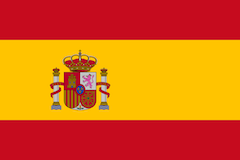Cuzqueñous, people from Cuzco, consider the Virgin of Bethlehem to be the patroness of the city. Among Peruvians, she is often more endearingly referred to as Mamacha Belén or Mother Bethlehem. She is at the center of a cult of devotees, and her image is of great importance to the city’s religious life and culture. Popular accounts of miracles and divine intervention surround the Virgin of Bethlehem. The monumental painting attributed to Santa Cruz Pumacallao shows two of the best-known leyendas or stories. In the upper-right corner of the painting is a scene narrating the origin of the Virgin of Bethlehem statue. According to the story, in the 16th century three fishermen from Bahía de Callao near Lima, Peru, came upon a floating wood crate. When they opened it, they discovered the wood statue of Virgin and a note that read: “Imagen de Nuestra Señora de Belén para la Ciudad de Cuzco” (Image of Our Lady of Bethlehem for the city of Cuzco). They carried the statue to Cuzco and presented it for placement in the Iglesia de los Reyes, which later changed its name to Parroquia Nuestra Señora Reina de Belén in honor of the Virgin. Another common story, which is depicted in the upper-left corner of the painting, describes the salvation of a humble Cuzco man named Selengue, who had succumbed to vices and disbelief. During a procession of the Virgin, Selengue realized that she was about to tumble off her platform. He quickly intervened to prevent the accident and, through his strength, prevented the Virgin from toppling over. At that moment, an apparition of the Virgin interceded in a horrific vision Selengue had about his final judgement, saving him as a result of his pious action.
The Virgin of Bethlehem, like other Catholic imagery, was introduced after the Spanish conquest. Paintings and sculptures of religious figures served an educational purpose. Bishop Mollinedo and other influential figures came to Cuzco to spread their own religious and artistic values, such as those of the courtly life of Madrid. Spain had its own traditions and festivities related to many of the Virgins that we see in colonial painting from the Andes. The Virgin’s garment is representative of 17th-century imperial fashion in Europe and symbolizes her divine status as Queen of Heaven and Mother of God as well as combining aspects of Inca textiles, jewelry, and weavings in bright colors. Despite the fact that European missionaries coerced the conversion of most, Andean people adapted and surreptitiously reinterpreted Catholic images in their own way. They made them with local materials: dyes derived from plants and minerals, wood, gold, and silver. Quechua- and Aymara-speaking artists added colorful ornamentation indicative of royal Inca attire and festivities. They integrated Inca religious imagery and symbolism into the representations of Catholic saints: they acculturated Catholicism. This is visible in the extensive use of gold leaf in paintings and sculptures, which reflected the divine attributes of Inti, the god Sun. Also, the way in which the virgin figures are shaped almost like mountains shows their association with Mother Earth or Pachamama, and the colorful, highly decorated dresses resemble costumes or capes utilized during indigenous dances and rituals as well as their European models. In the colonies, missionaries and officials allowed these adaptations as long as these images were accepted and incorporated into Andean peoples’ religious life.
The edges of the Menil’s painting have been cut, so part of the platform and the top of the Virgin’s crown are missing. The painting’s condition suggests years of devotional use during the colonial period and later. How large it was originally and the reasons why the painting was cropped are unclear. It is possible the trimming of the canvas occurred during a restoration. Some early Spanish colonial canvases were secured by glue directly to the frame or directly to the front of a stretcher or strainer. Failure of the adhesive could have damaged the edges, necessitating the cutting of portions of the painting. Alternatively, changing the painting’s frame or support might have required cutting edge sections, which would have been difficult to do without damaging the margins of the canvas. It is also possible the painting was cropped while removing it from a sculpted framework in a church, a common fate for paintings included in such settings. Despite the alterations, this iconic image of the Virgin of Bethlehem with gilded embellishments exemplifies the hybrid nature and distinctive imagery of Andean Catholicism that define paintings from the Cuzco school.






